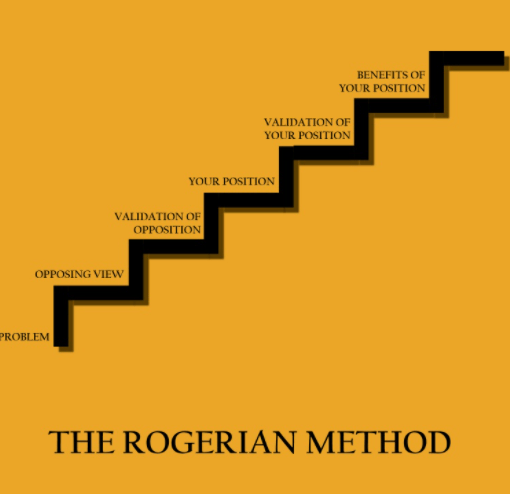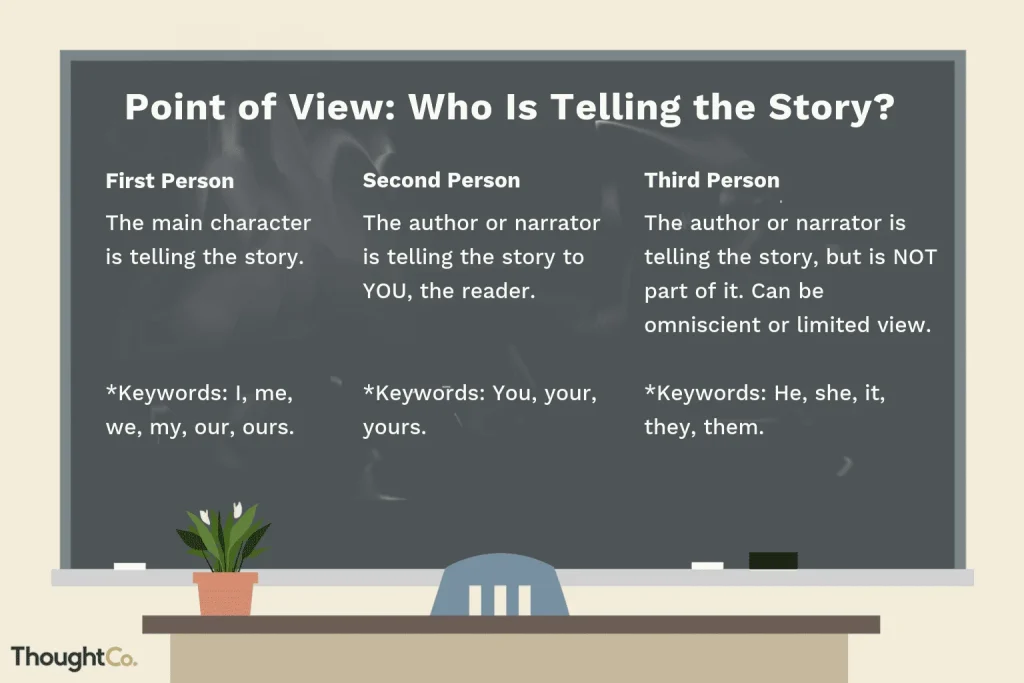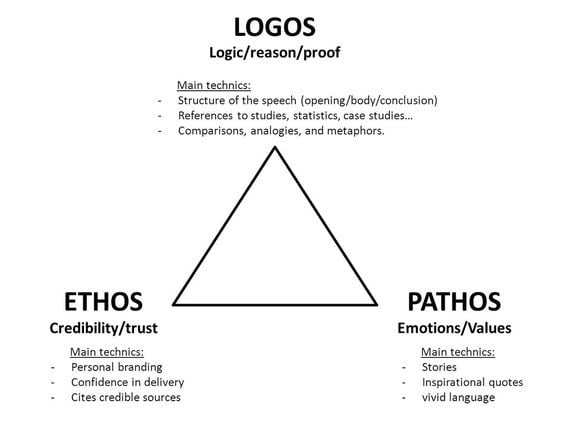An argumentative essay is a piece of writing in which the author employs factual evidence and logical reasoning to persuade the reader of a certain point of view. In this article, we will look at how to write an argumentative essay in detail.
- What is an Argumentative Essay?
- Difference between Argumentative Essays, Expository Essays and Persuasive Essays?
- Where are Argumentative Essays Used?
- Methods to write an Argumentative Essay?
- The Outline of an Argumentative Essay
- Structure of an Advanced Argumentative Essay
- Steps to Write an Aristotelian Essay?
- How to Write a Rogerian Essay?
- Different Types of Argument Claims
- Tips for Writing an Argumentative Essay
- FAQS
- What to avoid when writing argumentative essays?
What is an Argumentative Essay?

As mentioned previously, the goal of argumentative essays, like persuasive essays and other forms of writings, is to persuade the reader of a specific point of view. An argumentative essay combines factual data and unarguable reasoning to demonstrate that its thesis is correct.
In an argumentative essay, the author makes a clear declaration or argument regarding a certain topic or issue. However, despite its name, argumentative essays do not have to be hostile or belligerent. Rather, it takes its name from the argument method in which the writer gives enough research to both support their own thesis and refute competing viewpoints. This is because the purpose of the essay is to demonstrate that the author’s thesis is the only logical conclusion.
Difference between Argumentative Essays, Expository Essays and Persuasive Essays?
The primary difference between argumentative and persuasive essays is that, unlike argumentative essays, persuasive essays seek to convince the reader using emotive and less formal opinions.
Argumentative essays are concerned with solid empirical evidence. Thus, it is easy to mistake argumentative essays for expository essays, which also depend largely on fact-based data and extensive study. The fundamental distinction is bias. Argumentative essays assume one point of view is valid, whereas expository essays frequently offer all sides of the debate and leave it up to the reader to decide for themselves.
Where are Argumentative Essays Used?

Argumentative essays are quite prevalent in academic writing and are frequently an important component of writing in all fields. For example, you may have to take a stand on a health care issue in your nursing classes or build a case for tackling a local environmental problem in your biology class.
Methods to write an Argumentative Essay?
Argumentative essays follow the same writing process as other types of writing. Here’s a quick rundown of the approach for argumentative essays:
– Brainstorming
If the assignment does not contain your argument, spend some time brainstorming an excellent thesis.
– Preparation

This stage is for gathering all of the evidence for your essay as well as creating an outline.
Because proof is essential in argumentative essays, allow plenty of time for research until you have all the evidence you want. It’s also an excellent opportunity to plan out your essay, answering problems like when and how to explore competing viewpoints.
– Drafting
Create an outline for your essay. It is preferable to provide any facts and direct quotes as early as possible, particularly in argumentative essays that often mention outside sources.
– Revising
If required, polish your rough text, optimise word choice, and rearrange your arguments. Check that your language is clear and acceptable for the reader, and that you have effectively presented all of your points and rebuttals.
– Proofreading
Examine your work and concentrate solely on correcting errors. If you’re not sure about your grammar or diction, utilise Grammarly.
Also read this article How To Improve Your Proofreading Skills
The Outline of an Argumentative Essay
Argumentative essays should have a simple framework that is easy for readers to follow. A good argumentative essay should have the following structure:
– The first paragraph
The opening paragraph of your essay should summarise the issue, offer background information required to comprehend your argument, explain the evidence you will present, and express your thesis.
– The thesis assertion
This is a sentence from your first paragraph. It is a one-sentence synopsis of your primary point and assertion.
– Body paragraphs
A typical argumentative essay consists of three or more paragraphs that explain why you support your topic. Each body paragraph should address a new concept or piece of evidence and include a subject sentence that explains why the reader should agree with your argument in a clear and simple manner.

Body paragraphs are where you provide examples, research, statistics, studies, as well as text citations to backup your views. In addition, you may also address opposing viewpoints and explain why you disagree with them. Presenting facts and evaluating an issue from all perspectives provides credibility and helps you acquire the trust of your reader.
– Conclusion
A single paragraph that restates your thesis and summarises all of your body paragraphs’ arguments. A good ending will appeal to a reader’s emotions rather than adding fresh facts or further arguments. In certain circumstances, writers will offer a personal tale to demonstrate how the issue impacts them personally.
An example of concluding paragraphs in an argumentative essay
We discovered that the globe cannot continue on this path after doing a rigorous examination of rising global temperatures. Icecaps will continue to melt and destroy shorelines, many species will become extinct, and arable land will significantly decrease. As a result, we must develop renewable energy solutions to secure our planet’s future.
Examples of argumentative essays:
argumentative-essay-example-for-universityStructure of an Advanced Argumentative Essay
You can write argumentative essays in the three primary structures listed below.
– The Aristotelian or Classical

Use this structure when making simple arguments. The Aristotelian or classic argument is a standard form for a clear argument. It uses credibility (ethos), passion (pathos), and logic (logos) to support its claims, all of which are adaptable to almost any argument.
Steps to Write an Aristotelian Essay?
– State the problem.
As a writer, you must introduce the issue and establish the necessity for your assertion. You may do this by asking why this problem is significant and why your readers should investigate it. In addition, you must include background information in this area to help the reader grasp your case
– Point of view.
Base your explanation on the information you provided before and should outline the points that will be discussed.
– Explain your opponent’s point of view.
As you proceed, refute each of their assertions one by one. This should be accomplished by properly anticipating the argument and offering a deep analysis of the notion as well as the rationale for your opposition.
– Display your evidence.
You must also properly establish a link between the proof you supply and the conclusion you want your audience to reach
– Finish your argument.
This is the stage at which you should summarise the ideas you’ve already made but in a more compelling manner.
The Toulmin

This structure is used when discussing difficult topics with no obvious facts. In addition, because the Toulmin approach is based on logic and detailed study, this strategy is best suited for unravelling complex topics, and also works well for debunking an opposing point of view piece by piece.
Stephen Toulmin, a twentieth-century British philosopher, devised this argument construction. To provide a realistic and decent essay, he believes it should be separated into six parts.
– Data
This includes all of the information and arguments that are required to establish your point. The information provided here will assist you in presenting your facts. You must ensure that the facts are properly examined.
– Claim
In this section, you must provide your thesis statement or assertion. The thesis statement’s structure must be followed exactly. It should be able to accurately deliver your message. This is the most crucial element of your argument.
– Warrants
This section contains logical assertions that bridge the gap between the evidence and your thesis statement. These are often speculative, but must be supported by sound logic.
– Qualifiers
This section should provide scenarios when your argument is valid and powerful. As a result, you must ensure to write your qualifiers precisely.
– Backing
This section of the argument discusses the evidence or supporting assertions that are useful in validating the warrants. These also assist you to win your reader’s trust.
The Rogerian

Use this structure when demonstrating the validity of both sides of an issue or when presenting to a mixed audience. The Rogerian technique is essentially a middle-ground strategy in which you concede both the legitimacy of your argument and the validity of the opposing perspective. It is the least aggressive and most courteous, which aids in persuading readers who are inherently prejudiced against your major premise.
How to Write a Rogerian Essay?
– State the problem.
You introduce the problem you want to address in the first section. By framing the issue as a problem, you raise your chances of effecting positive change via your actions.
– First, explain your opponent’s point of view.
When they are accurate, validate their points. It is because when you offer your opponent’s point of view without criticising them, you establish yourself as a fair listener and writer. In addition, you also demonstrate that you understand the scenarios in which the opposing ideas may appear agreeable to you.
– Explain your point of view.
This is the stage at which you introduce your point of view. You introduce your point of view when you have established a strong presence in the reader’s thoughts. In addition, this helps to make a stronger impression on the readers, and they are more likely to read or listen to your remarks with more focus.
Different Types of Argument Claims
Once you’ve determined what you’re discussing and have a thesis statement, think about how you’ll present your case. The following are some ways you can use:
– Cause arguments
You argue that something causes something else in this form of argument.
For example, you may investigate the reasons for big animal declines in the world’s oceans and create a case for your cause.
– Evaluation arguments
You make an argumentative appraisal of anything as “good” or “bad” in this form of argument, but you must first define the criteria for “good” or “bad.”
For example, you may analyse a children’s book for your education class, but you would need to develop specific criteria for your rating in order to be understood by your audience.
– Arguments for a proposal
To suggest a solution to a problem you must first define the problem and then suggest the solution.
For example, you may advocate for a policy that will boost college retention rates.
– Arguments based on narrative
You present your case in this sort of argument by narrating a tale with a clear point relating to your argument.
For example, compose a story about your experiences with standardised testing.
Arguments for rebuttal
In a rebuttal argument, you build your case by refuting a previous idea or ideas.
Arguments for definition
Use a definition as the beginning point for presenting your case in this form of argument.
In a definition argument, for example, you can argue that NCAA basketball players should be defined as professional players and hence compensated.
Tips for Writing an Argumentative Essay
When it comes to producing high-quality argumentative essays, there are a few things you should keep in mind.
Select interesting topics

Choosing an interesting topic will make you feel energised from the minute you begin scribbling words in your essay. The topic of an argumentative essay should always be disputed, arguable, and researchable.
Here are some topics for your next argumentative essay
| Science |
| Should hydraulic fracturing be legalised? |
| Should parents be permitted to alter the genetics of their unborn children? |
| GMOs: do they benefit or hurt people? |
| Should students be required to receive immunizations in order to attend public school? |
| Should the United Nations become engaged in solving climate change? |
| Sports |
| Should college players be compensated for their participation on sports teams? |
| Should players and coaches be paid the same amount? |
| Should sports be separated based on gender? |
| Should the notion of designated hitters be removed in baseball? |
| Should American sports embrace soccer? |
| Technology |
| Should Facebook be permitted to gather information from its users? |
| Should self-driving automobiles be permitted? |
| Is it ethical to use automation to replace human workers? |
| Should there be legislation prohibiting the use of mobile phones while driving? |
| Has the internet had an influence on human civilization, both favourably and negatively? |
| Ethics |
| Should Indigenous Peoples’ Day replace Columbus Day? |
| Should the death penalty be permitted? |
| Is animal testing permissible? |
| Should drug possession be made a non-criminal offence? |
| Religion |
| Should religious groups be taxed? |
| Should religious organisations be permitted in schools? |
| Should the words “one country under God” be included in the pledge of allegiance? |
| Is it ok to teach religion in schools? |
| Is it ok for clerics to marry? |
Select a structure
There are three types of argumentative essay structures: Classical, Toulmin, and Rogerian. To give your essay a logical flow and purpose, use any of these forms of arguments.
Conduct extensive research
Extensive research is essential for writing a strong argumentative essay. The more you learn, the larger your perspectives will be, and you will have even more facts to back you up.
Sources you can trust
Without substantial and real proof, it is impossible to expect someone to agree with conflicting viewpoints. If you want to persuade someone to alter their mind, you must provide them with information from reliable sources.
Utilize counter-arguments

Using counter-arguments is a crucial component of writing an argumentative essay. Introduce the opposing viewpoint in a few phrases and then rebut it with fact-based empirical data. This is an effective method of influencing a reader to support your point of view.
Make a strong introduction.
Remember that the beginning paragraph may make or break your essay. A solid thesis statement informs your reader of your position and offers them an insight into your perspective on the subject.
Do not use complicated fancy language and overly lengthy phrases.
Your objective should be to strike the reader’s mind with clever reasoning rather than to sound wiser than they are. Make use of basic jargon that is infused with inventiveness.
Clarity and power
When writing an argumentative essay, avoid sounding hesitant or uncertain.
Topics that are hot and sensitive should be avoided.
Students should avoid contentious issues such as race, sports, politics, and religion at all costs. The last thing you want to do is upset a reader with strong personal opinions.
FAQS
Is it permissible to ask a question in an argumentative essay?
You can pose a query to yourself in your essay. However, throughout the body of the essay, you must respond to it or get near to solving it. You can also demonstrate that there is no answer to the question you posed.
What is the ideal number of paragraphs for an argumentative essay?
A typical argumentative essay is made up of three or more paragraphs that explain why you support your topic. Each body paragraph should address a new concept or piece of evidence and include a subject sentence that explains why the reader should agree with your argument in a clear and simple manner.
What to avoid when writing argumentative essays?
Here are the five things you should avoid at all costs.

– Leaving out the outline
Some students fail to see the significance of outlining and, as a result, tend to skip this critical stage of the writing process. This is a serious error to make, especially when writing anything as complicated as an argumentative essay.
– Inadequate research
Another incorrect technique to save time is to sacrifice the research process. All argumentative essays necessitate substantial research, and a lack of proof to back up your point might cause your work to fall short of the essential criteria.
– Vague thesis statement
A good thesis statement is vital for an argumentative essay since it comprises the position you will argue throughout your content. If your thesis statement is imprecise or confusing, it will be difficult to prove, and your readers will struggle to comprehend what you mean.
– Your arguments aren’t supported
Argumentative papers are essentially about arguments, which should be supported by appropriate evidence from credible sources. However, some students overlook the later component, resulting in unconvincing arguments.
How to end an argumentative essay without sounding boring?
Conclusions are a difficult work since you must reiterate your argument and the relevance of your argument without appearing repetitious, uninteresting, or melodramatic. If you find yourself looking at the final paragraph and feeling exhausted or defeated, consider one of the following techniques:
Remember an early example as a bookend
Recall a scenario, picture, or statement from earlier in the essay. This might be content from your opening, or it could be an example from an early body paragraph.
Finish with a thoughtful quotation
This approach has the potential to go awry, so proceed with caution. You don’t want your readers to assume that you’ve relinquished power in the closing paragraphs of your report. Still, if you emphasise your voice early in the ending paragraph, this strategy might help you close your paper on a dramatic, amusing, or thought-provoking note.
Conclude with a brief analysis
Conclusions are not the place for in-depth close reading, nor should you give material that confuses or modifies the thesis at this point in the essay. You can, however, provide one tiny piece of evidence that allows you to summarise your argument.
Share with your friends






